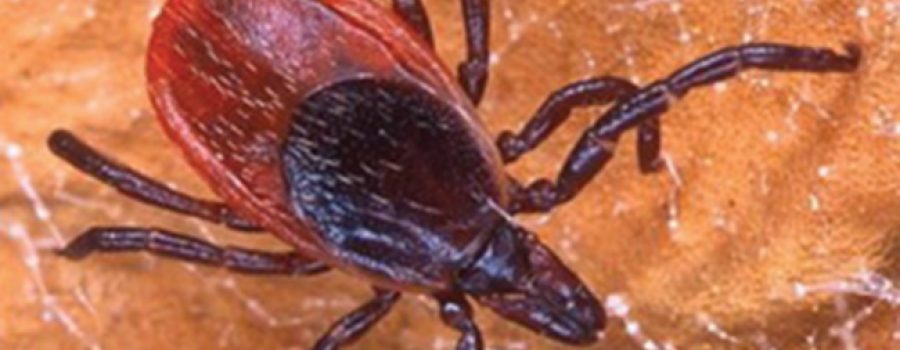Lower Thames Valley Watershed – Field sampling for blacklegged ticks was conducted this past spring and summer by a team of researchers from the University of Guelph. They visited Longwoods Road, C.M. Wilson and Two Creeks Conservation Areas as part of an ongoing surveillance project funded by the Public Health Agency of Canada. The aim of this research is to understand the changing distribution of Ixodes scapularis (also known as the blacklegged tick or deer tick) and the risk of Lyme disease in southern, eastern and central Ontario. They shared their results with the Lower Thames Valley Conservation Authority (LTVCA).
Each conservation area was surveyed for ticks by ‘tick dragging’. This method involves dragging a 1 m2 white flannel blanket over the forest floor and overlying vegetation for 3 person-hours. The blanket is examined every 3 minutes and all life stages of the tick (adults, nymphs and larvae) are removed and counted. If adults and nymphs are collected, they are tested for the agent that causes Lyme disease (Borrelia burgdorferi), and four other pathogens that the tick can transmit.
Field sampling conducted with the LTVCA did not detect any blacklegged ticks at this time. This suggests that the current risk of Lyme disease from blacklegged ticks in this area is low. However, the blacklegged tick population has been expanding in Ontario and ongoing monitoring of this area, such as submission of any ticks found by the public to the local health unit, is recommended.
Even though no ticks were collected, the public is encouraged to practice tick safety when they are out in the conservation areas, enjoying nature. This includes wearing long, light-coloured pants and shirts, applying DEET and conducting a thorough ‘tick check’ when you get home. No woodland area is ever considered zero risk for blacklegged ticks since they can be introduced by birds and other mammals.
According to the Ontario Government website https://www.ontario.ca/page/lyme-disease, “Blacklegged ticks live in woodlands, tall grasses and bushes… They are most commonly found in areas along the north shores of Lake Erie, Lake Ontario and the St. Lawrence River. Not all blacklegged ticks carry Lyme disease. A tick must be infected by the bacteria causing Lyme disease in order to pass it on to you. While the probability is low, it’s possible to encounter an infected tick almost anywhere in Ontario. Ticks are most active in the summer months, but can be found at any time of the year when the temperature is above freezing.”
For more information on Lyme disease, please visit:
– Public Health Agency of Canada http://www.phac-aspc.gc.ca/id-mi/lyme-eng.php
– Ontario Ministry of Health and Long-term Care
http://www.health.gov.on.ca/en/public/publications/disease/lyme.aspx
– Centers for Disease Control and Prevention http://www.cdc.gov/lyme/
Your local public health unit is also a valuable source of information, including preventative education for the public.
For Further Information Contact LTVCA 519-354-7310
Don Pearson – General Manager – Ext. 224
Randall Van Wagner – Manager of Conservation Lands and Services – Ext. 230
[email protected] www.ltvca.ca
“LTVCA acknowledges the financial support of our 10 watershed member municipalities,
our many granting partners and dedicated volunteers”

